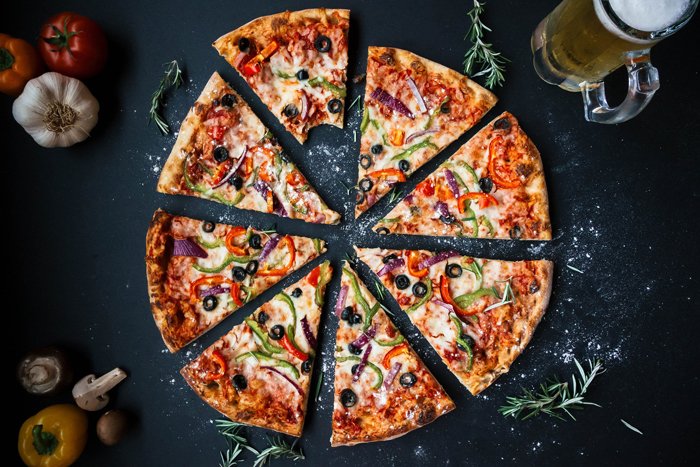Meat photography is a challenging niche in food photography. Cooked meat can often turn brownish and dull. Making a raw chicken look appealing is tricky.
But don’t worry, we have the secrets of shooting great pictures of meat!
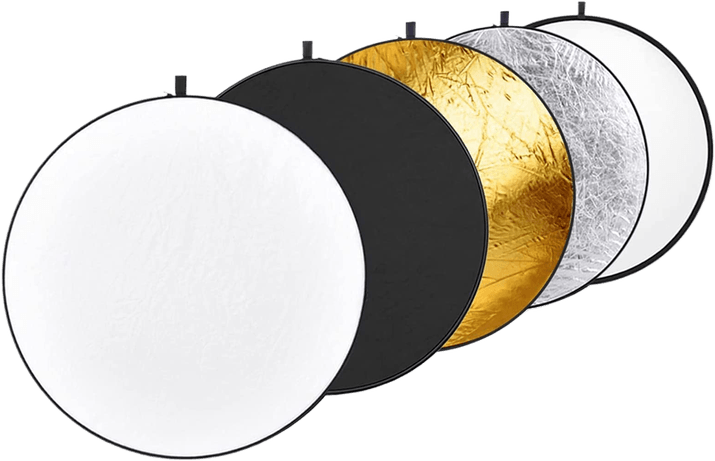
10 Tips for Taking Great Meat Photography
This is the most important tip for meat photography. You need to get the best quality meat, especially if you are photographing it uncooked.
I recommend avoiding meat from the supermarket and getting it from the butchers instead. Feel free to ask the butcher to show a few pieces of meat so that you can make the right choice.
Don’t feel bad for being picky and asking for a different piece! At the end of the day, you are a food photographer, and you need to be satisfied with your ‘model’.
If you have to work with grind meat, ask the butcher to grind it fresh for you.
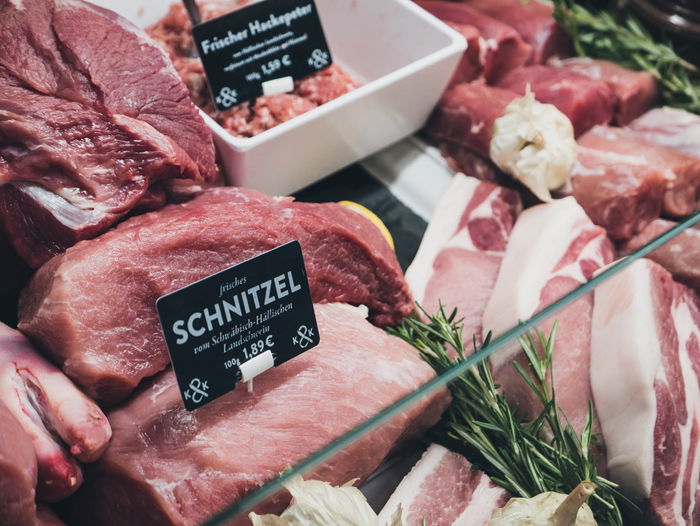
9. Keep the Meat Looking Fresh
Avoid piling up meat on top of each other. There is no oxygen between the piled-up pieces of meat, and it can turn from red to brown where they touch. The best is to let the raw meat air if it was in the packaging.
Discolouring won’t affect the taste, and it’s also not a big problem for cooked meat photography. But if you want to capture them in the raw state, pay attention to oxidation.
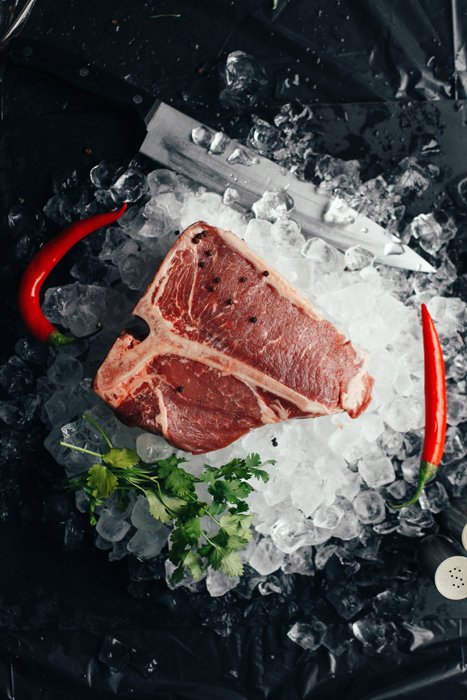
8. Get Rid of the Ugly Parts
If you are photographing raw meat, you might have to trim the ugly parts. Get rid of the weird-looking strings and the fat.
But don’t cut out all the fatty parts. It gives texture and depth to your subject. Plus, we all know that fat gives the best flavour to meat dishes.
Food photos not only capture the current state of an ingredient. They are also triggering the viewer to imagine what the food will look and taste like in the future.
That’s why a red, raw steak with some fatty parts looks so inviting. We all imagine what it will taste like when prepared.
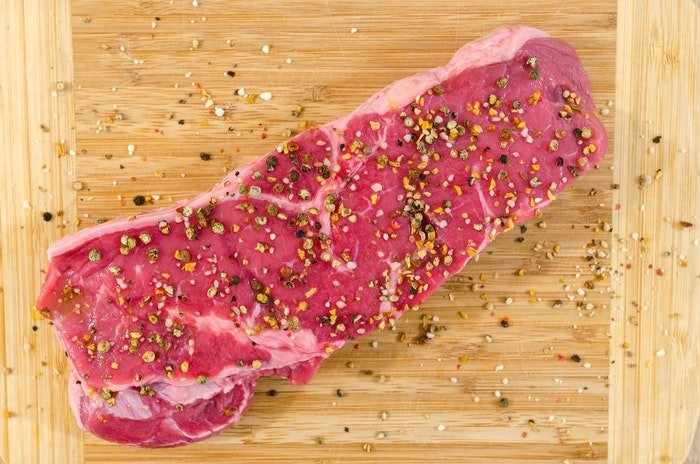
7. Choose Simple and Natural Backgrounds
Simple and natural backgrounds fit meat photography very well. Meat is a natural product, and any artificial backdrop would make the meat pictures unappealing.
The red hues of the meat stand out from almost every background. Dark backgrounds can add dramatic effects to your meat photography. Raw meat looks tough, and its colors pop out from a dark background.
Wooden tables or butcher paper look great as backdrops for a meat picture. If you are photographing a raw steak with a nice texture, try using a marble background. The meat and the marble will have similar patterns that will make your steak photo look amazing.
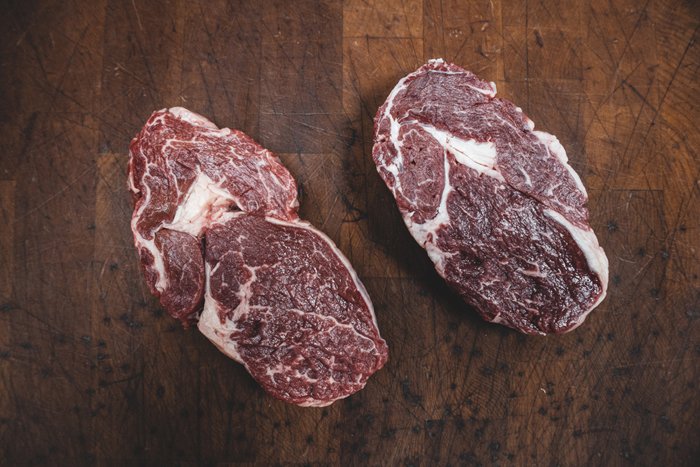
6. Use Side Lighting or Backlighting
Backlighting and side lighting make the meat look very appealing. In food photography, natural light is your best friend.
Do not place the light source too close to the meat because it an make it too shiny. This would mean that the photo won’t show enough of the texture of the meat cuts.
But make sure that your light creates a bit of shine on the meat. Otherwise, it will look dull and dead.
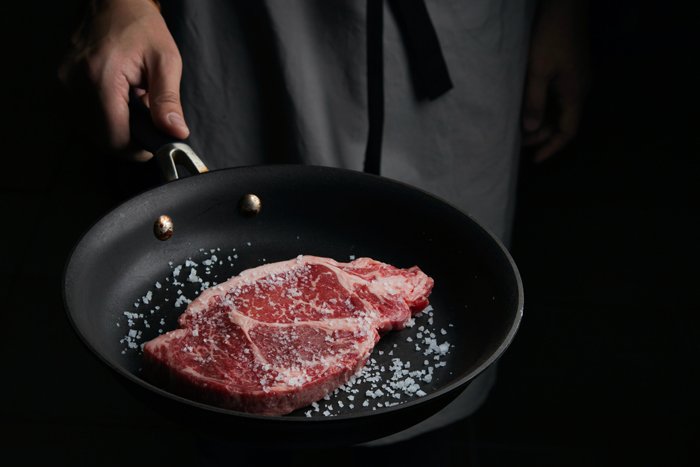
5. Don’t Chicken out From Poultry
It’s tricky to style poultry to look great in food photos. Raw chicken doesn’t look as appetizing as raw steak. The bumpy chicken skin doesn’t have a nice texture.
Plus, people often associate raw chicken with diseases.
But there are food styling tricks that can save your poultry photoshoot. Unless you have to photograph certain parts of it, go fo the whole bird.
It looks more exciting, and you add herbs and props around it. A whole turkey with the right decoration will make everyone think of a delicious Thanksgiving or Christmas dinner. And nobody will think about salmonella anymore.
You can also go for capturing popular parts of the chicken such as the wings or the drumsticks.
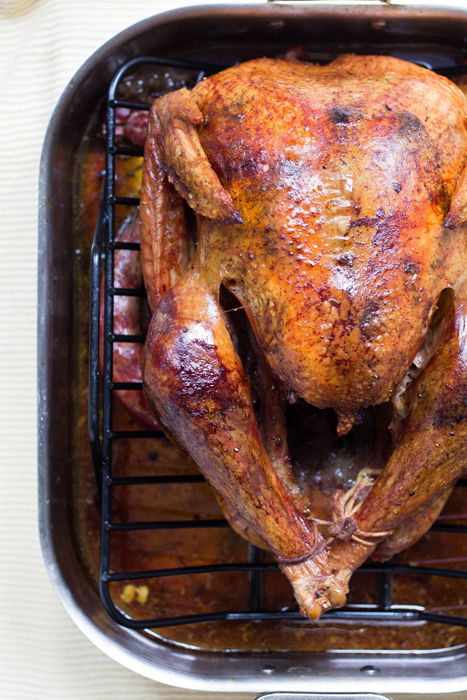
4. Undercook Your Meat
Cooked meat shrinks, looks grey and its texture becomes dull. The way you prepare the subject will have a big impact on your food photography.
Use butter instead of oil and undercook your meat subject. Even if you like to eat your steak well-done, a rare-medium one looks much better in photos.
When the meat is ready, don’t wait too long before photographing it. It will lose its vividness and start looking dry.
If this happens, brush the meat with some oil. This will bring the shine back.
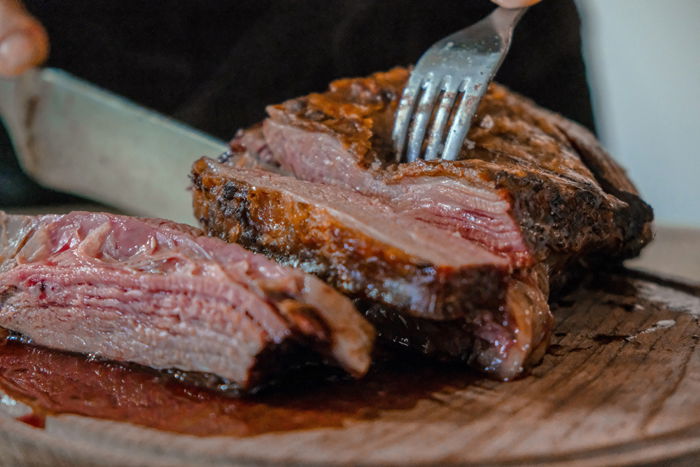
3. Use Simple Props
Choose natural and simple props for your meat photography. Sharp knives, herbs and spices will enhance your food photography.
You can also place containers of oil or marinade sauce around the raw meat. Add steamed or grilled vegetables next to your cooked meat. Finish the setup with some salt and pepper flakes.
Use props that fit the style of your meat photography and are relevant for your subject.
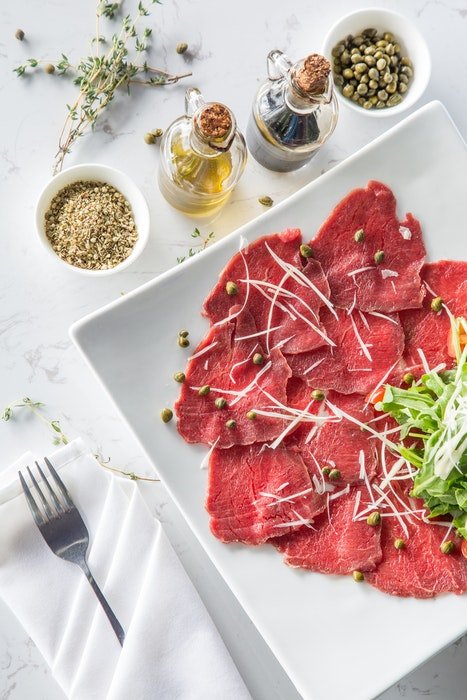
2. Capture the Preparation Process
Turning raw food into a delicious meal is art. Why don’t you capture the whole process?
Photograph someone cutting up the meat, soaking it in the marinade and cooking it over the fire. This way, you can turn your food photography into a delicious story.
Adding human elements also enhance food photography. The viewer feels like they have a sneak-peek into the cooking process.
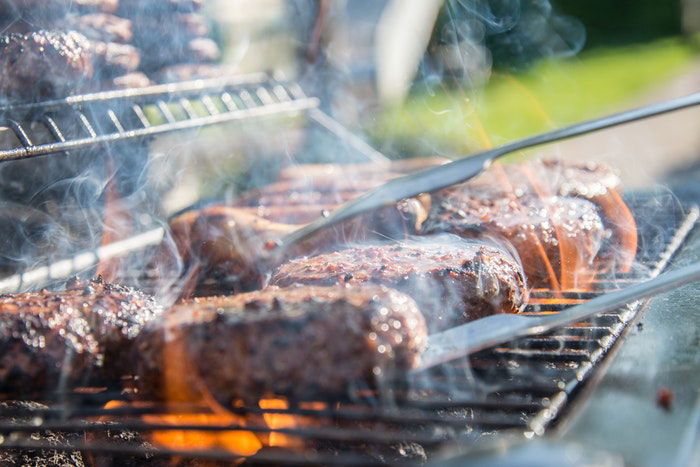
1. Use Food Styling Tricks
There is nothing wrong with using food styling tricks to enhance your final photos. Often, food photographers do not cook their chicken subject.
Instead, they roast the skin with a blowtorch and then paint the body with shoe polish or hoisin sauce to give it a nice brown color.
Another food styling trick is to add grill marks on the meat. Seeing grills marks makes people think the food is tastier. You can add grill marks with a skewer heated over a flame. Or you can even paint them on your subject to make it look like it came fresh off the barbeque.
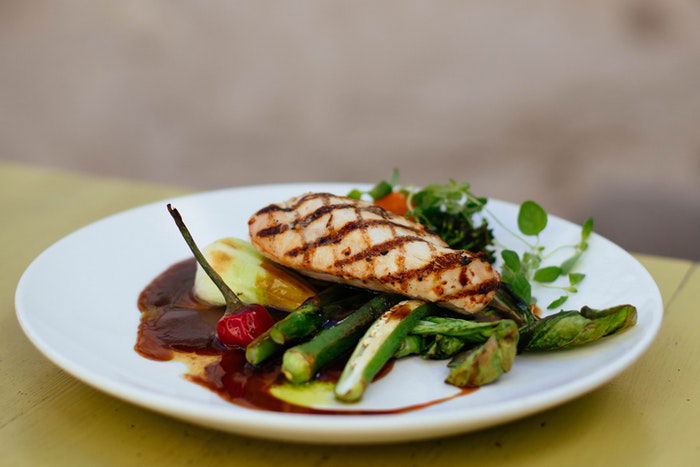
Conclusion
Meat photography can be tricky, but a good food photographer likes challenges. Use our tips to capture mouthwatering food photography!
Don’t forget to check out our Edible Images eBook for all the best food photography tips!

